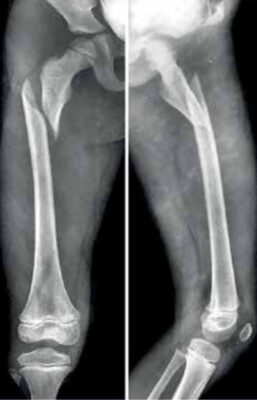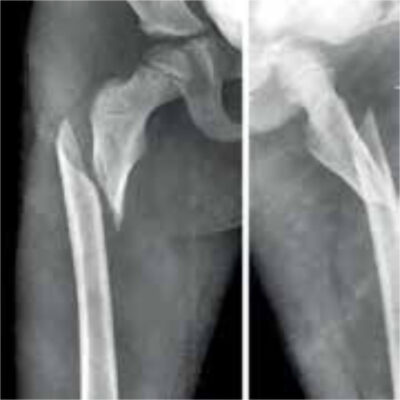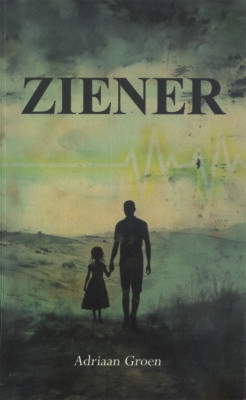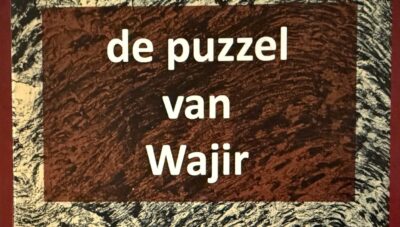Main content
The rates of extremity fractures in low- and middle-income countries (LMICs) are two to five times higher than in high-income countries (HICs).[1] Trauma contributes significantly to the burden of disease worldwide and injuries account for a major part of the surgical burden. [2,3] Little is known about the access to care and outcomes of clinical management which create unethical health inequity for the inhabitants of LMICs compared to HICS.
Lower extremity fractures are common in Tanzania. In 2019 a research project was started in Haydom Lutheran Hospital (HLH), with the aim of investigating the access to care and outcome of treatment for patients who sustained either an open tibial fracture or proximal femur fracture. Patients were included at the time of admission to the hospital and interviews were conducted to assess potential delays in seeking, reaching and actually receiving care. Patients were seen after three, six and twelve months for follow-up on their clinical and self-reported treatment outcomes.
Start of the project
HLH is a large regional referral hospital in rural Tanzania with its own research department. HLH has an established collaboration with Global Surgery Amsterdam (GSA), an institute that focusses on research and training to improve access to safe surgical care worldwide. Thom Hendriks, a Dutch medical doctor in global health and tropical medicine, worked in HLH until March 2019 and conducted studies on burns in conjunction with GSA. HLH and GSA together, with financial support from the Tweega Medica Foundation, created a job opportunity for a successor of Hendriks to work at HLH and conduct research on lower extremity factures. Anneloes Eleveld, a Dutch medical doctor in global health and tropical medicine, started working in Haydom in March 2019. Grayson Mtui, a Tanzanian medical doctor, had been involved in the burn studies and his interest and intention to work on a new research project on trauma care were clear. In the first half year, Fleurance Smit, a Dutch medical doctor, also joined the project and this resulted in the formation of a research team with supervision through GSA.
Mtui and Eleveld established a close working relation and initiated the study by developing a research proposal and applying for ethical clearance. Dr Bellet, head of the orthopaedic department, could not play an active role in conducting the research himself but agreed, with the support of the hospital administration, to be the formal supervisor. The project received funding from the Otto Kranendonk Fund (OKF), which is managed by the Netherlands Society for Tropical Medicine and International Health (NVTG).
The acceptance by and trust of the hospital administration, other doctors at HLH, and patients was crucial to the success of the research project. Teamwork, transparency and local stakeholder involvement were given due attentions. To make sure that the hospital staff were aware of the project activities, several presentations were held explaining the content and purpose of the study, and providing periodic updates of study progress and preliminary results.
Teamwork
The research team consisted of Eleveld, Mtui and Smit. In day-to-day operations, Mtui was responsible for patient inclusion and setting up appointments for follow-up visits. He was also the first person to be approached by the hospital administration in case of any questions. Eleveld and Smit oversaw the data collection, processing, and analysis and kept abreast of relevant literature. The strength of the research team was its mixed nature, Tanzanian and Dutch, with complementary qualities and expertise. It proved important to have a team member who was familiar with local customs, the cultural background, and the setting, and who was also fluent in Swahili. He also helped in formulating interview questions, for example about a patient’s financial status, and how to act when unexpected events happened that could interfere with interviews. Dutch team members added research experience and access to an extensive network of supervisors and funding opportunities.

In implementing the study, the research team relied on the cooperation of hospital staff, including nurses in the wards who helped in finding patient files, seeing patients and informing the research team about changes. Officers working in medical records, radiology, finance department each had their roles as well.
Dr. Bellet, as the formal supervisor, was very supportive and helped where possible whenever practical issues arise. Support also came from the trauma and plastic surgery department of Amsterdam University Medical Centre and from the main supervisors: dr. Botman, dr. van Embden, professor Bloemers and professor Ritt.
Data collection and follow-up
Clinical measurements on patients, the initial interviews, and follow-up were part of a prospective cohort design. The research team followed a schedule for data collection and interpretation. Back-ups of files were made, which turned out to be an excellent idea, as some time back a lightning strike destroyed the digital X-ray archives.

For quality purposes, a high follow-up rate is needed. One of the most commonly heard answers while calling study participants to set up appointments for follow-up visits is: “Namba umepiga haipatikani kwa sasa, tafadhali jaribu tena baadae” (translated: the number you are calling is not reachable at the moment, please try again later). Telephone numbers might have changed, phones may not be charged, or people may be staying in areas without a network. About 60% of the patients do visit the hospital for follow-up. It is a significant effort for them to travel for limited personal benefit. So it is important that they feel noticed and appreciated and do not have to wait too long once they arrive at the hospital.
The precise moment of their arrival was not known beforehand though, which requires some flexibility on the side of the research team to combine the follow-up visits with their clinical work, which could be challenging. The OKF research grant allowed us to reimburse patients for their travel expenditure and to refund the cost of X-ray examinations, where applicable. Usually a small lunch allowance or compensation for loss of a day’s income was added.
Some patients, however, lived too far away or were unable to travel due to their clinical condition. If patients were unable to reach the hospital, the team undertook an outreach visit to their homes, which was time consuming and posed all kinds of logistical challenges. The follow-up of treatment outcomes over a period of twelve months was one of the biggest challenges, as the story of Getabang (pseudonym) shows. Getabang sustained an open tibia fracture, was admitted to the hospital in August 2019 for two months, and was included in the study. After he was discharged, the research team tried to reach him for several weeks, but could not get hold of him. A home visit was then considered, but during the rainy season the roads to his remote village were inaccessible. Eventually the outreach team did manage to visit him, after a drive of more than two hours. A man at a local market area who knew Getabang gave us directions to his house. “It is just there”, after which another one and a half hour drive followed, through dry lands, bushes, and small hills, with here and there a house made of mud or some cattle herded by children. The team reached a small compound surrounded by a fence made of branches and that is where Getabang with his family lived.
The team recognised his happy smile straight away. Somehow surprised, but happy to see them, Getabang invited the team members into his house, where the follow-up measurements and interview could be conducted. After being invited for lunch, the team was offered a present: a goat! Satisfied and accompanied by goat sounds, the long journey back home began.
Added value
The project aimed to evaulate access to care and treatment outcomes in patients who sustained an open tibial fracture or proximal femur fracture, with a view to improving protocols and clinical guidelines suitable for low-resource settings and adapted to patients’ individual needs. The project showed the importance of a sustained international partnership to eventually strenghten the local health system and patient care. It also stimulated the development of knowledge and an infrastructure for health research. The study provided an invaluable opportunity to establish a bond with patients, which would not be possible in an ordinary medical care setting.
Combining research with a full-time clinical job without compromising on the quality of care forms a challenge. We conclude with a note directed to global health workers: if you have the opportunity to engage in research, do so. Take on the challenge to combine research with your clinical duties, as it will enhance collaboration, learning from each other, and hopefully contribute to equitable medical care.
References
- Mock C, Cherian MN. The global burden of musculoskeletal injuries: challenges and solutions. Clin Orthop Relat Res. 2008 Oct;466(10):2306-16. DOI: 10.1007/s11999-008-0416-z
- World Health Organization. The global burden of disease: 2004 Update [Internet]. Geneva: World Health Organization; 2008. Available from: https://www.who.int/healthinfo/global_burden_disease/GBD_report_2004update_full.pdf?ua=1
- Haagsma JA, Graetz N, Bolliger I, et al. The global burden of injury: incidence, mortality, disability-adjusted life years and time trends from the global burden of disease study 2013. Inj Prev. 2016 Feb;22(1):3-18. DOI: 10.1136/injuryprev-2015-041616


















































